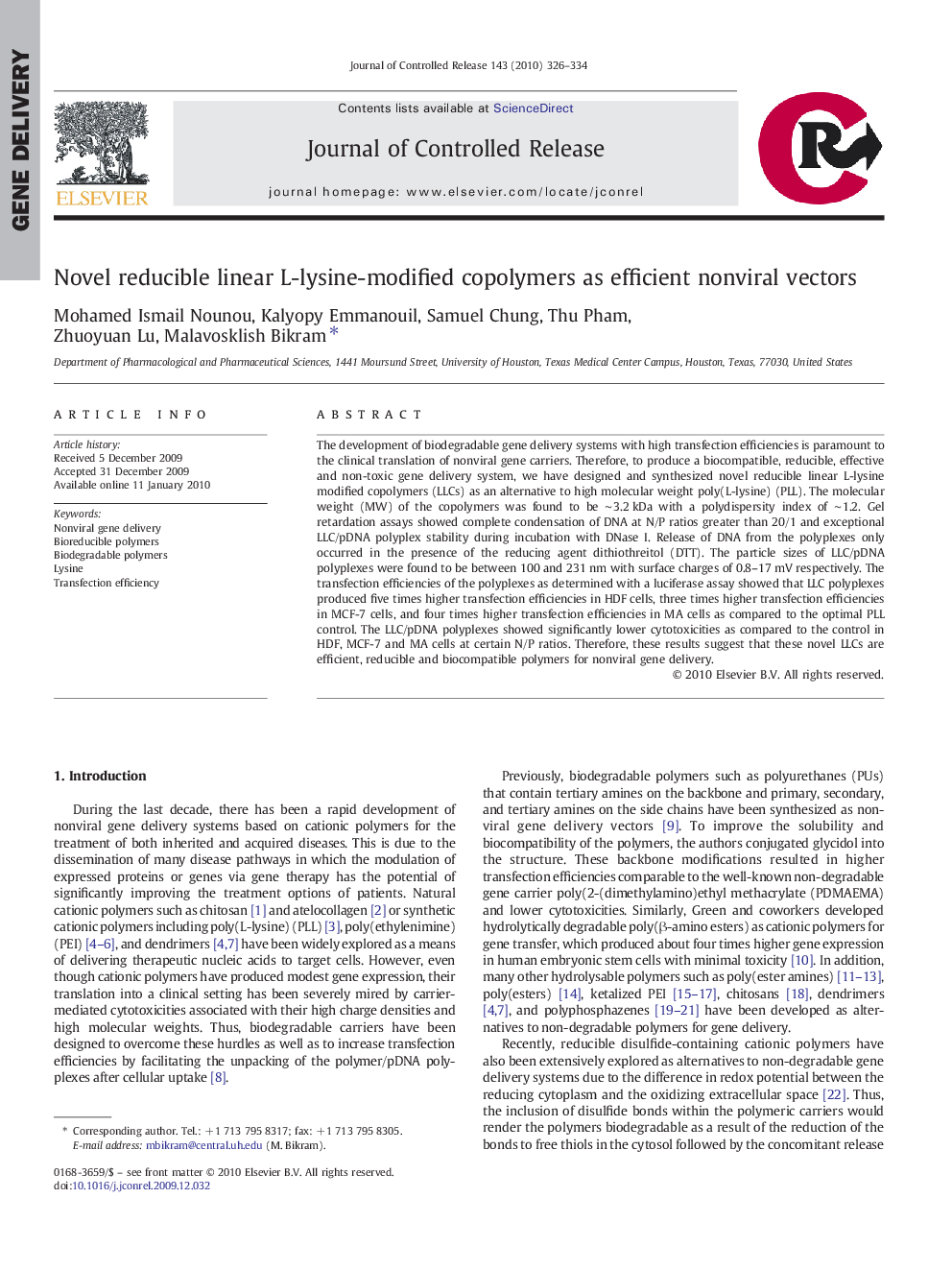| کد مقاله | کد نشریه | سال انتشار | مقاله انگلیسی | نسخه تمام متن |
|---|---|---|---|---|
| 1425651 | 986774 | 2010 | 9 صفحه PDF | دانلود رایگان |

The development of biodegradable gene delivery systems with high transfection efficiencies is paramount to the clinical translation of nonviral gene carriers. Therefore, to produce a biocompatible, reducible, effective and non-toxic gene delivery system, we have designed and synthesized novel reducible linear L-lysine modified copolymers (LLCs) as an alternative to high molecular weight poly(L-lysine) (PLL). The molecular weight (MW) of the copolymers was found to be ∼ 3.2 kDa with a polydispersity index of ∼ 1.2. Gel retardation assays showed complete condensation of DNA at N/P ratios greater than 20/1 and exceptional LLC/pDNA polyplex stability during incubation with DNase I. Release of DNA from the polyplexes only occurred in the presence of the reducing agent dithiothreitol (DTT). The particle sizes of LLC/pDNA polyplexes were found to be between 100 and 231 nm with surface charges of 0.8–17 mV respectively. The transfection efficiencies of the polyplexes as determined with a luciferase assay showed that LLC polyplexes produced five times higher transfection efficiencies in HDF cells, three times higher transfection efficiencies in MCF-7 cells, and four times higher transfection efficiencies in MA cells as compared to the optimal PLL control. The LLC/pDNA polyplexes showed significantly lower cytotoxicities as compared to the control in HDF, MCF-7 and MA cells at certain N/P ratios. Therefore, these results suggest that these novel LLCs are efficient, reducible and biocompatible polymers for nonviral gene delivery.
Schematic diagram of the DNA release inside the cytosol from the LLC (L-lysine modified copolymers)/pDNA polyplexes upon the reduction of the disulfide bonds within the polymer backbone due to the difference in redox potential between the intracellular and extracellular environment.Figure optionsDownload as PowerPoint slide
Journal: Journal of Controlled Release - Volume 143, Issue 3, 10 May 2010, Pages 326–334